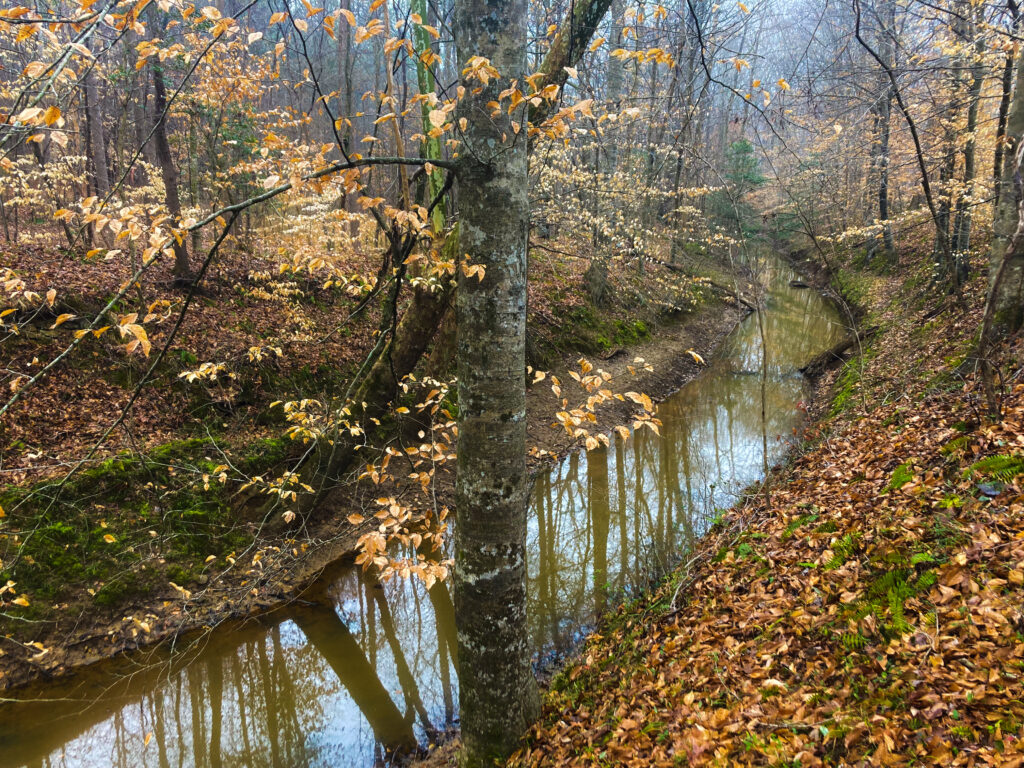By Madeline Joslin

The earth is quick to envelop human structures when no one is around to maintain them and stave off decay, and yet the landscape keeps evidence of our shared history. These traces give us clues to the past and how humans and the landscape have influenced each other.
TLC believes a landscape’s history is invaluable to understanding its present. Learning how the land once was used and by whom shapes our knowledge of its present-day ecological niches and allows us to appreciate those who have stewarded the land long before us. Each TLC preserve and easement has its own layers of history that can inform us to better conserve it for the future.
Sometimes, when TLC decides to protect a landscape, we already know much of its shared history and past. During the conservation process, we learn from both the landowners and the land itself that not only do our projects protect critical natural features, but they also preserve remarkable cultural assets that development could have easily erased. The Portofino Lowlands conservation easement is one such case. Protected by TLC at the end of 2021, this easement safeguards 46 acres along the Neuse River in Johnston County. The project protects the important cultural traces of the land’s past and will provide a critical corridor for the future Mountains-to-Sea Trail.
A connection to the land
It’s a damp February morning along the Neuse River as Norwood Thompson tours his private property in Johnston County. In 2014, he decided to place an easement on 46 acres to preserve the property’s ecological integrity, and historical importance and to reduce flooding on his upland properties. Thompson jokes that the tax incentive didn’t hurt either, although this is an important motivator for many landowners considering conservation.
We stop at a spot where the Neuse River ripples across rocks placed there centuries ago to form an eddy. Early European explorers named the river after the Neusiok people, a tribe indigenous to present-
day Lenoir, Carteret, and Craven counties. The Tuscarora people, who inhabited this TLC easement as well as much of the inner coastal plain, referred to the river as Neyuherú·kęʔkì·nęʔ which in English translates to “loblolly pine in water.” The Neuse is approximately 275 miles (443 km), making it the longest river in North Carolina.
Canadian geese bathe unbothered in the river as Poppy and Coco, Thompson’s spritely dogs, race around the muddy property with wild abandon. In contrast to these gleeful creatures, an historical artifact, likely forged through suffering and cruelty, lies mere yards away. It could almost be mistaken for a creek, but its sheer banks, rigid form, and still water are at odds with most creeks. Thompson states that it’s not a creek at all, but a mile-long, hand-dug canal dating back to the 18th century.
According to Todd Johnson of The Heritage Center of Johnston County, the ten-foot deep, twenty-foot-wide canal was built by enslaved people between 1786 and 1789. This was a grueling process that took years as the labor was done completely by hand.
The canal was used as a mill race, channeling water from the Neuse River to a grist mill on James Lockhart’s plantation. His will names 11 enslaved people: Nann, Gincy, Harry, Pat, Ritter, Julius, Ned, Phil, Sal, Esther, and Rose. It’s unknown whether these names are of the people who built the canal. The list, however, is a reminder of those who had an intimate knowledge of this land.
During the Great Depression, Percy Flowers, a notorious moonshiner, foxhound breeder, and savvy businessman amassed 5,000 acres of land in Johnston County some of which now make up Thompson’s property. Upon purchasing the land in the early 2000s, Thompson discovered twelve old still sites. Flowers grew tobacco and corn to make illegal alcohol, of which he was the state’s number one producer. In 1958, The Saturday Evening Post dubbed Flowers “King of the Moonshiners” and while some referred to him as a local Robin Hood for donating generously to White Oak Baptist Church, others thought of him plainly as a criminal.
After Watson died in 1852, the land was divided between multiple family members, leading to a significant dispute documented in the Supreme Court of North Carolina’s “Cases of Equity” in the Dodd vs Watson in 1858. Dodd accused the defendant, Watson, of stealing
the millstone, and “wantonly and deliberately” destroying a building frame attached to the mill dam and taking timber from the Gully tract. Watson was found not guilty of “destructive waste” and it is unknown whether the mill was ever reconstructed. Archival documents label the plantation as Pineville, owned by Dr. Josiah Watson, an original benefactor of Ravenscroft School, owner of the NC Railroad, and one of the largest slaveholders in the state.
This land easement and many others hold difficult truths within their soils. As land stewards and conservationists, we need to recognize those who have sustained the land before us because acknowledging the past is critical to creating a sustainable future. In reflecting upon the history of this easement, we also imagine the legacy TLC will leave on this land as it joins the many layers of the past.
